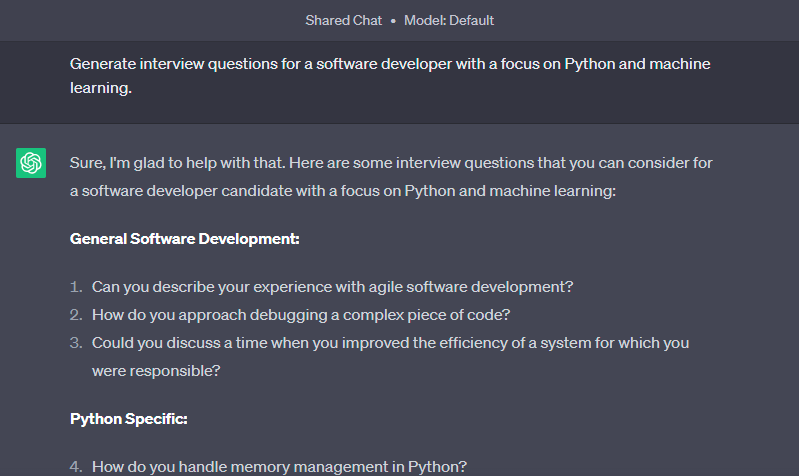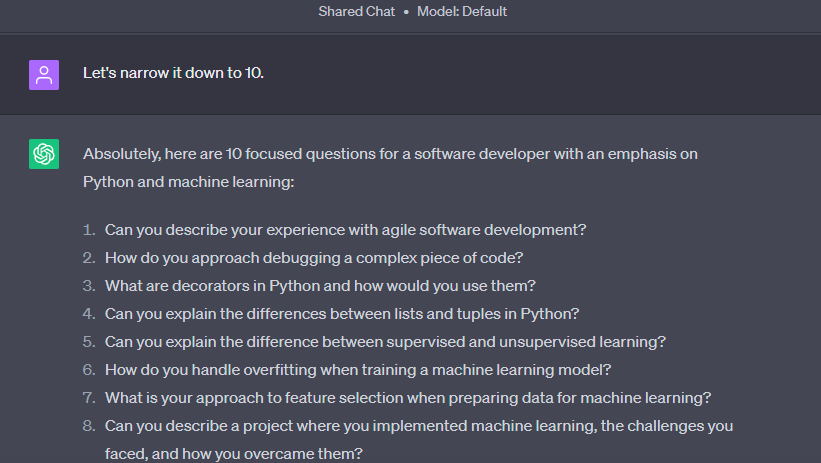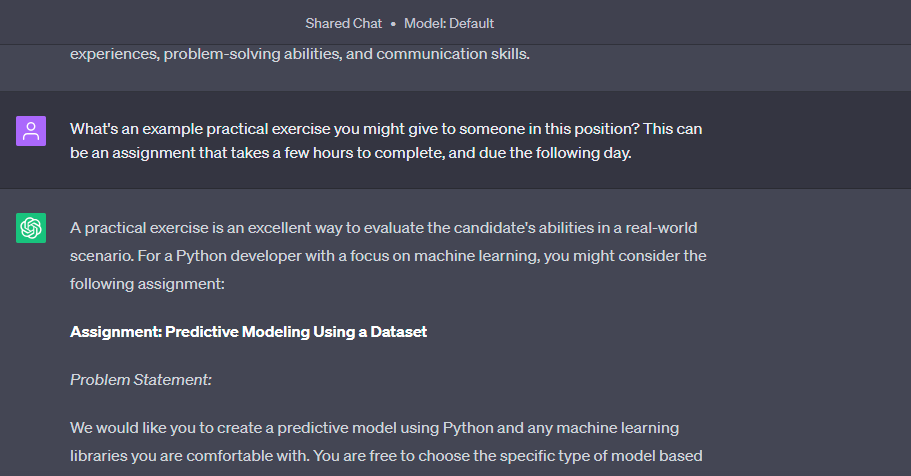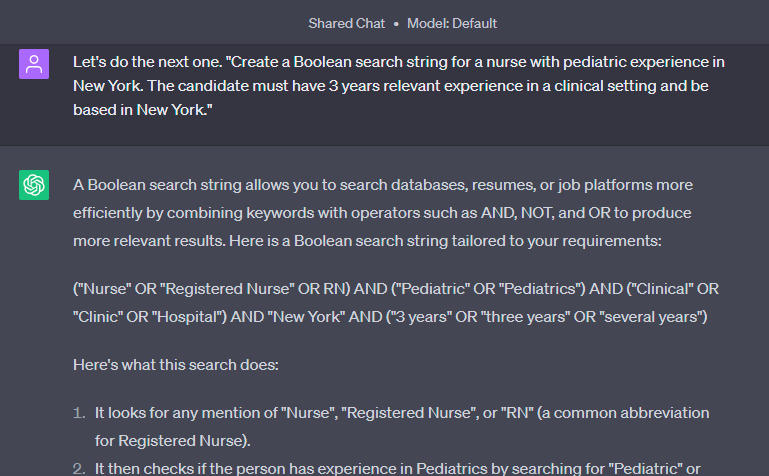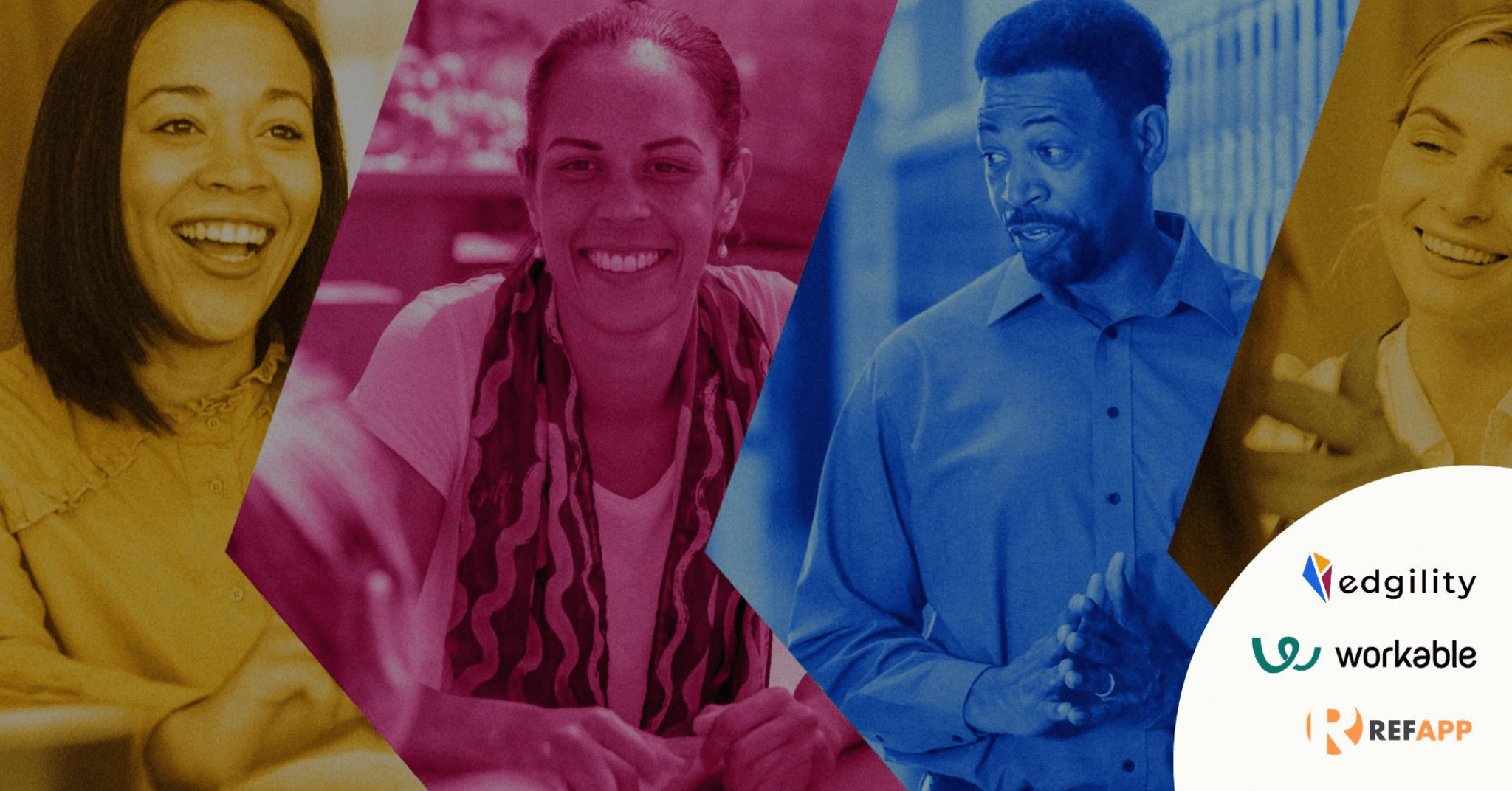ChatGPT in recruitment: how to teach your teams to use it
Unlock newfound efficiency in the recruitment process by onboarding your team to use AI tools like ChatGPT. This guide walks you through a step-by-step training approach, helping ensure the successful integration of this game-changing technology into your workflows.

ChatGPT and other generative AI tools offer innovative solutions to complex solutions – including in recruitment. It can save hard-working recruiters hours of repetitive grind in streamlining their existing hiring and recruiting processes.
Using conversational AI in recruiting can help us be better recruiters in everything from sourcing the best talent to drafting engaging job descriptions.
As with anything, integrating AI into recruiting workflows is not without its challenges – particularly in training and onboarding your recruiting team to use it.
Many professionals in the recruiting industry either misunderstand what ChatGPT does and how it can help them get more done and be better at their jobs. Some are afraid – not without reason – that incorporating AI tools in recruiting may remove the human element and dehumanize the recruiting process, or even replace their jobs.
It’s important to remember that ChatGPT is a tool – it’s not here to replace our jobs but to help us be better at them. It’s designed to augment and enhance human ingenuity and innovation, by freeing up time from routine and administrative tasks and freeing up more time for more strategic, higher-value decision-making.
We’ll help you clear up the misunderstanding around these myths and serve as a strategic guide on how to train recruiters to use ChatGPT in recruitment and navigate potential challenges that may arise in the process.
Contents
Training teams to use ChatGPT in recruitment
Imagine having your very own HR virtual assistant who never gets tired, does exactly what you ask of them, is available 24/7 a day year-round, is at all times eager and willing to help, and incorporates any feedback you give them as you go.
That’s the benefit of using ChatGPT in your recruiting process. However, as with all tools, there’s a right way and a wrong way to use it effectively. Incorporating ChatGPT into your recruiting workflows will take an initial period of training and onboarding as your team adjusts to the technology.
Introduction to ChatGPT
To best get your recruiting team up to speed, we recommend hosting interactive sessions that showcase ChatGPT’s potential use cases and abilities in action.
You can use either pre-recorded videos or a live demo, walking through the ChatGPT AI and showing your team example prompts and scenarios of using it for recruiting purposes like creating job descriptions and sourcing candidates. This will give your recruiting team ideas on how they can use it for themselves.
This initial step helps your team see for themselves how ChatGPT can save them time and save more time and energy on more important decision-making.
Remember, familiarity with ChatGPT doesn’t happen overnight. The goal at this stage is to get your recruiting team curious about ChatGPT and show them the possibilities of what it can do for them.
It’s best to learn on the job
A big part of the process of becoming proficient in ChatGPT and other AI tools is in hands-on experience – experimenting and trying different things to test its limits and get a sense of what it can and can’t do.
Organizing practical training sessions is a great way to facilitate this process. Your recruiters can interact directly with ChatGPT and practice doing things like crafting job descriptions, generating interview questions, playing around with different prompts, and seeing how the language model responds.
This will not only help your recruiters get more comfortable with ChatGPT, but it will also help them learn how they can adapt it to their needs. They’ll see through first-hand experience how it can help them in their day-to-day jobs.
Templates are all well and good, but the best results from ChatGPT often come as a result of you playing around with it and exploring what it can do. Your recruiters can benefit more from your training sessions and onboarding with practical examples.
Let’s look at a few examples of use cases of ChatGPT in recruitment:
1. Creating interview questions
From a pre-made job description, ChatGPT can help create relevant interview questions that you can tailor to fit the role and the company. It may surprise you with what it comes up with.
Be specific, relevant, and detailed in your prompts, and give ChatGPT as much context as is needed. Mention things such as the job title, several job requirements, and anything else specific to the role.
Example prompt: “Generate interview questions for a software developer with a focus on Python and machine learning.”
You can also ask it to tweak and modify its response to suit your needs, such as including more questions or fewer.
Example Prompt: “Let’s narrow it down to 10”
You can even have it generate practical exercises for the interview.
Example Prompt: “What’s an example practical exercise you might give to someone in this position? This can be an assignment that takes a few hours to complete and is due the following day.’
2. Writing Boolean search strings
Give ChatGPT the requirements and preferred experiments for a job, and it can help you create search strings to help source candidates.
Example prompt: “Create a Boolean search string for a nurse with pediatric experience in New York. The candidate must have 3 years relevant experience in a clinical setting and be based in New York.”
Remember that potential candidates may phrase their job experience differently, so play around with different variations.
3. Integrating ChatGPT into workflows
You can also show your recruiters how to build ChatGPT into their recruitment workflows alongside the other tools and software their familiar with. Show them ways they can use it, such as:
Integrating with your Applicant Tracking System (ATS): Asking ChatGPT to draft email communication with job candidates through their ATS. Example prompt: “Create a follow-up email for a candidate who interviewed for the software engineer position last week.”
Interview scheduling: If you use a digital calendar tool for scheduling, your team can ask ChatGPT to craft an appropriate interview invitation. Example prompt: “Write an invitation for a second-round interview for a sales representative role.”
Candidate feedback: After the interview, recruiters can use ChatGPT to deliver personalized feedback. Example prompt: “Draft a polite rejection email for a candidate who was not selected for the marketing executive position.”
These are just a few examples. ChatGPT is extremely flexible and versatile and can be used right alongside a variety of tools like ATS or CRM systems.
4. Running mock scenarios
Hosting practice sessions and exercises with ChatGPT is a great way to help your recruiting team build confidence with ChatGPT, to make sure they understand how it works and how they can use it in their job. Here are some scenarios you can simulate:
Candidate screening: Give your recruiters a fictional resume, and have them generate potential interview questions using ChatGPT based on the resume. Example prompt: “Generate interview questions for a candidate applying for a project management role with experience in agile methodologies.”
Candidate sourcing scenario: Have your recruiting team create a Boolean search string given a hypothetical job role and a list of required qualifications and skills. Example prompt: “Create a Boolean search string for a data analyst role requiring Python, SQL, and knowledge of machine learning techniques.”
Candidate outreach scenario: Ask your recruiters to practice reaching out to a potential candidate, using ChatGPT’s help. For example, a prompt they might use is: “Draft a candidate outreach email for a senior graphic designer position”
These are just a few examples. The goal is to provide realistic advice and help them understand the range of tasks ChatGPT can help with.
Provide ongoing learning and support
Advancements in AI technology happen parabolically. Hardly a week goes by when we don’t hear about how ChatGPT is poised to revolutionize a given industry or make another one obsolete. It’s still new, exciting, and scary territory, and people are still unsure about whether it’s a good or bad thing.
Staying ahead of the curve as AI continues to develop means providing your team with ongoing support, such as:
Provide regular training sessions: Organize regular training sessions as ChatGPT and the other AI tools you use to build and update new features or improvements. This way, recruiters are always knowledgeable about the latest developments and can use the tool to its full potential.
Create a resource hub: Consider creating a repository of knowledge and resources where your team can access ChatGPT prompt templates, guides, videos, and example use cases. This can be a collaborative Google doc that your team adds to over time.
Establish a support team: Consider designating an established team or person to provide real-time assistance to any recruiters who encounter difficulties or have questions regarding ChatGPT – including in recruitment work. This can be part of your existing IT or HR team if you have a small business.
Provide feedback channels: Have a way for recruiters to offer feedback or report any issues or problems with ChatGPT so that problems can be resolved quickly. This can also provide useful insights for future training
Ensure a smooth transition
Just because you onboard your team with ChatGPT doesn’t mean that all your team members will be on board, so to speak.
Addressing concerns proactively will help the doubters and the fearful among your recruiting team that AI is not here to replace their jobs, but to help them focus on more strategic tasks that require a human touch.
Here are some ways you can smooth out any bumps in the road and keep resistance to ChatGPT to a minimum:
1. Be clear on what and why
It all starts with open, honest transparency. Let your team know why you’re advocating for ChatGPT in recruitment, the benefits it has, and how it can help them get more done in less time. Emphasize at every stage that it’s a tool meant to assist them, not replace them. This will help manage expectations and alleviate concerns.
2. Integrate gradually
Introduce ChatGPT gradually into your recruitment workflows. Identify areas in your existing processes where they can be used. Find opportunities for integration, particularly any repetitive or monotonous tasks that require significant human effort. Start small at first with simple tasks, like boolean search strings.
As your team dips its toes in the water, scale its usage internally. This allows team members to adapt to the technology at their own pace and reduces potential overwhelm.
3. Showcase and celebrate successes
Provide a positive narrative and build associations within your recruiting team, by sharing the success stories about how ChatGPT has benefited certain team members.
This will help foster positive perception and wider acceptance.
4. Ensure a continuous learning experience
Foster a culture of collaborative learning and adaptation. As new features in ChatGPT and other AI tools roll out, your team should be prepared to adapt and evolve with them. Update your team regularly with new features and improvements to ChatGPT. Celebrate the team members who use it effectively, and encourage them to showcase what they learn.
Create the future by embracing ChatGPT for HR
Leveraging AI tools like ChatGPT is a strategic step towards transforming the way your recruiting team does things, for the better.
When you have ChatGPT automate your routine tasks, it allows your recruiters to focus on what matters – people. That’s what makes it such an exciting time to be a recruiter in the age of AI.
Embrace this change and harness the power of AI for more efficient, more data-driven, and more human-centric recruitment. The future is not to be feared, but to be created. We invite you to explore what ChatGPT can do for your recruiting and HR teams in our vast library of tutorials.
Frequently asked questions
- How can ChatGPT help improve recruiting processes?
- ChatGPT streamlines repetitive tasks such as drafting job descriptions or interview questions, leaving recruiters more time for strategic decisions.
- Will integrating AI into our workflows create job insecurity among staff?
- AI is designed to aid, not replace, human effort. It's all about emphasizing this stance and showing how it makes jobs easier and more efficient.
- How do we start introducing ChatGPT to our HR operations?
- Start with interactive sessions showcasing ChatGP’s potential uses, followed by hands-on experience and review of example uses. Gradually integrate more advanced features into existing workflows.
- What ongoing support should we provide after training?
- Provide regular training updates on new features or improvements in the tool, a resource hub for self-help guides and templates, a dedicated support team for real-time assistance & feedback channels.
- Can I customize usage according to the complexity of tasks at hand (or in different roles)?
- Absolutely! From sourcing potential candidates with search strings template generation to scheduling interviews using digital calendars – there are numerous customizations possible based on requirements.
